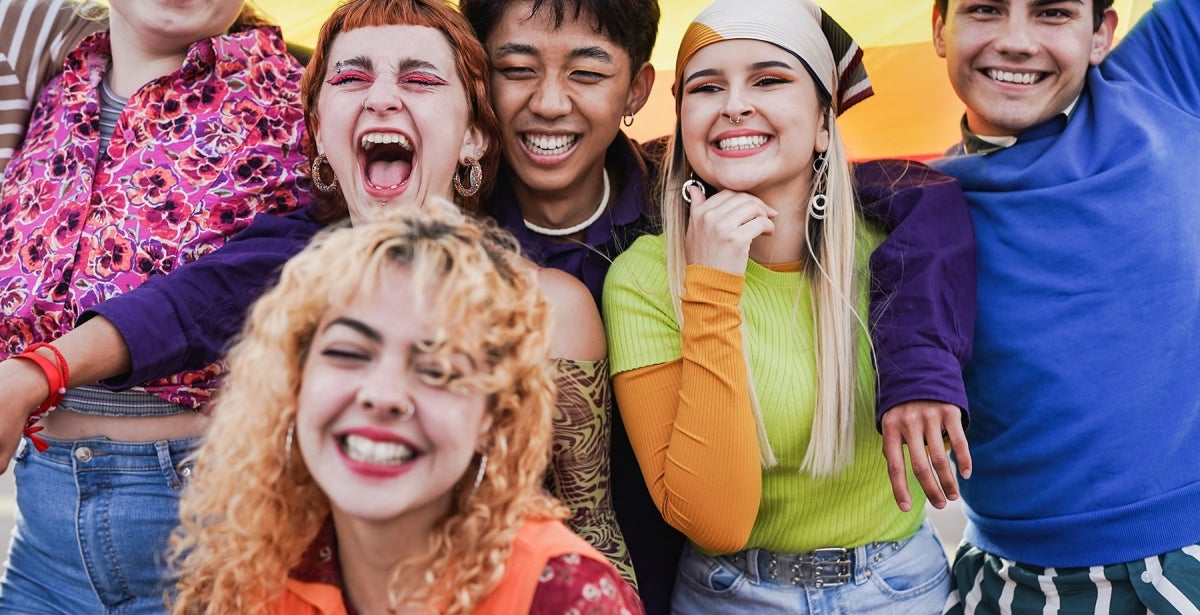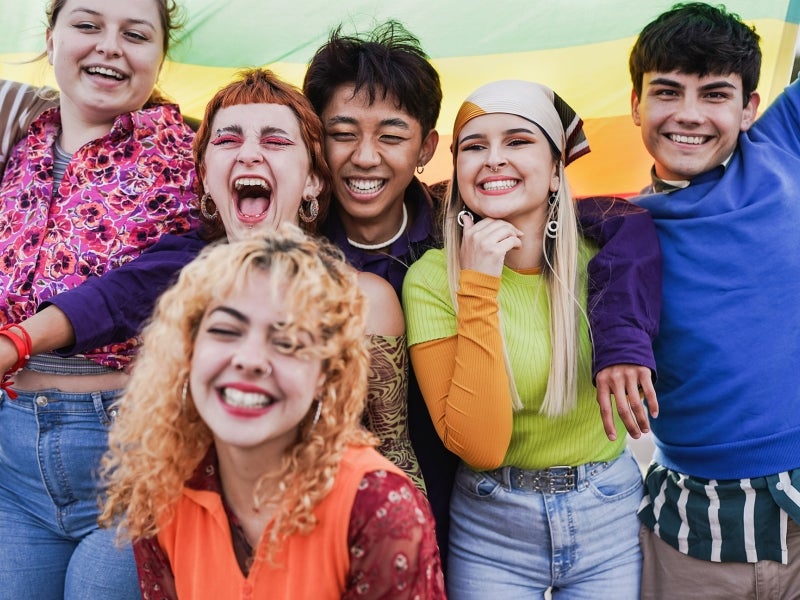Breaking barriers, building resilience: embracing mental health in the LGBTIQA+ spectrum

Australia has made significant strides in supporting the LGBTIQA+ community over the past five years, including the landmark legalisation of marriage equality in December 2017. These positive changes have contributed to greater acceptance and understanding of diverse sexualities within many communities. While challenges such as prejudice, discrimination, and abuse persist, with non-heterosexual individuals experiencing up to twice as much as their heterosexual counterparts, it is important to examine the strength and resilience of LGBTIQA+ individuals and communities and highlight strategies that support mental health.
The LGBTIQA+ community
Over the past few decades, there has been a growing understanding and acceptance of diverse sexualities across many countries and cultures, leading to numerous advancements in Australia. For instance, discussions about sexualities are now taught in schools and there are a number of LGBTIQA+ parliamentarians of various genders.
However, despite increasing awareness and understanding of the LGBTIQA+ community, not everyone knows who is included in this group or what the acronym stands for.
What does LGBTIQA+ stand for?
As awareness and acceptance of LGBTIQA+ communities grow, it is essential to recognise the diverse range of identities encompassed by the acronym. LGBTIQA+ stands for lesbian, gay, bisexual, transgender, queer/questioning, and asexual identities, with the "+" symbol signifying inclusivity for other sexual orientations. This evolving acronym also embraces non-binary and pansexual orientations as well. It is crucial to understand that LGBTIQA+ experiences go beyond heterosexuality and cisgender identities, encompassing a spectrum of gender, sexuality, and physiology.
Concepts within the LGBTIQA+ community
To fully appreciate the LGBTIQA+ community, it is important to comprehend the definitions of significant concepts such as sex, gender, and sexuality:
Sex
Sex refers to the biological and physiological characteristics of an individual’s anatomy. People can be born with either female or male biological characteristics, but these are not mutually exclusive, and it is possible for people to possess both.
When it comes to sex, there are several important things to remember:
- Sex refers to bodily differences: These differences include sexual organs, chromosomes, hormones and gonads, as well as general traits. For example, males tend to be taller than females and grow hair in different areas.
- Sex is typically determined at conception: During fertilisation, the sperm contributes either an X or Y chromosome to the egg’s X chromosome. This usually results in a foetus that is either XX (female) or XY (male), which determines the baby’s birth sex.
Sex can evolve: Over a person’s lifetime, their sex can change due to cosmetic and sex reassignment surgeries, as well as the administration of hormones.
Gender
Gender refers to a person’s identity, expression and behaviours. Its attributes are associated with gender identities, roles and relationships between individuals of different or the same gender. Some examples of gender identities include being a woman, man or nonbinary.
When it comes to gender, it is important to remember the following:
- Gender is a social construct: The idea of gender is developed through a process of socialisation and is commonly culturally determined as masculine or feminine. These concepts are learned throughout the course of one’s life but can and do change and evolve on an individual and societal level. It is based, however, on the false belief that there are only two genders, man and woman and that these genders are synonymous with biological sex. There is also an assumption that these two genders are attracted to one another. For this reason, people who don’t ascribe to certain constructs may feel excluded.
- Gender is a category and political idea: Gender is both a way of thinking about people’s identities and how they present themselves and a political idea that speaks to the distribution of power in society.
- Gender and biological sex are distinct: A person’s gender identity may not correspond to their biological sex at birth. For example, transgender individuals’ gender identities may not correspond with their biological sex assigned at birth, and nonbinary individuals may not identify with the gender binary or as men or women.
- Gender is personal and is expressed in different ways: Some people recognise their gender identity at an early age, whereas others do not do so until later in life. Gender is also something that people express in a number of ways.
Sexuality
A person’s sexuality refers to who they are sexually, romantically or emotionally attracted to. A person can be attracted to individuals of a different gender, the same gender, both or have another orientation entirely. Additionally, a person may also identify as asexual (they don’t experience sexual attraction) or pansexual (attracted to someone regardless of their sex or gender identity).
When it comes to sexuality, it’s important to keep the following in mind:
- Sexuality is a spectrum: Someone might be completely heterosexual, completely homosexual or a combination at any time.
- Sexuality is fluid: People’s sexual, romantic, and emotional attractions can change throughout their lives.
- Sexuality can be suppressed: Due to discrimination, cultural expectations and in some countries, criminal laws, many people repress their sexuality.
Fostering LGBTIQA+ mental health and well-being
While progress has been made, the LGBTIQA+ community continues to face discrimination and prejudice, leading to unique mental health challenges. Recognising these challenges allows for targeted interventions and support. As a result, they are at risk for many mental health challenges.
Some key areas affecting LGBTIQA+ mental health include:
Stress and Anxiety
Ongoing discrimination, prejudice, and the need for hypervigilance can lead to heightened stress and anxiety within the LGBTIQA+ community. LGBTIQA+ people constantly feel that they need to be alert and prepared to be attacked, which can leave them feeling overwhelmed, fatigued and afraid.
They may also be more likely to feel ‘minority stress.’ This is when an oppressed, marginalised group experiences additional stress because of discrimination and prejudice against their community.
Trauma and PTSD
Coming out about one's sexuality or gender can lead to traumatic experiences, especially if individuals face rejection or shunning from their families or communities. Recognising and addressing this trauma is crucial for their mental well-being.
Other mental health issues
Discrimination and ongoing challenges also contribute to mental health issues, such as:
- Depression
- Substance use disorders
- Anxiety
- Risk of homelessness
- Psychological distress
- and increased thoughts of self-harm and suicide.
Due to ongoing discrimination, research shows that LGBTIQA+ individuals are twice as likely to become homeless and are at higher risk than heterosexual individuals of suicidal thoughts and thinking about or acting on self-harm behaviour.
Initiatives to help improve wellbeing and mental health in LGBTIQA+ communities
Most LGBTIQA+ community members experience some form of discrimination, with a staggering 74.8% of LGBTI people aged 18+ reporting having considered attempting suicide at some point during their lives. Statistics like this only highlight how vital access to support services and mental health initiatives is to the wellbeing of LGHTIQA+ communities.
While progress is still being made, LGBTIQ+ Health Australia has identified several opportunities to support members of these communities. These opportunities for improvement include:
- Reducing the rate of psychological distress and suicidality among LGBTIQ+ communities.
- Increase access to safe and inclusive mental health care and support.
- Increased empowerment leads to improved wellbeing for LGBTIQ+ Aboriginal and Torres Strait Islander Peoples.
- Reform data, research, funding and governance to deliver effective, community-led responses to LGBTIQ+ mental health and suicidality.
How to be an ally for LGBTQIA+ communities
An ally is someone who supports and stands by LGBTIQ+ communities. While the role of an ally is constantly evolving and requires ongoing learning, generally, an ally is someone who:
Amplifies voices of the LGBTIQ+ community.
Stays informed on challenges and initiatives to support change.
Encourages others to learn more about issues facing the LGBTIQ+ community.
Helps create safe and inclusive environments for anyone who identifies as LGBTIQ+.
Three ways to become a better ally
- Listen and learn: Becoming an ally requires conscious effort. Do your own research about the history and challenges of the LGBTIQ+ communities and listen to their experiences.
- Champion inclusive language: Avoid gender-biased language or expressions that reinforce stereotypes when referring to groups or individuals. Instead, adopt alternative phrases that are culturally appropriate and don’t reference specific genders, ages, or stereotypes. For example, saying “Hi team” instead of “Hi guys”.
- Call out inappropriate behaviour: If you notice exclusionary policies or anti-social behaviour such as stereotyping, jokes or hurtful language, safely and respectfully challenge the decision. This can be a great time to educate others on how their behaviours can harm marginalised communities.
Community support and resources
The LGBTIQA+ community is resilient, and numerous resources and networks are available to foster mental health and well-being:
LGBTIQA+ mental health organisations
Organisations like LGBTIQ+ Health Australia, QLife, and Queerspace provide support, resources, and advocacy to address the mental health needs of the LGBTIQA+ community. They offer helplines, counselling services, webinars, and networking opportunities.
Finding LGBTIQA+ friendly professionals
When seeking mental health support, it can be beneficial for LGBTIQA+ individuals to find professionals who understand their unique challenges. Checking for specialties, reading online reviews, seeking references from LGBTIQA+ community centres, and directly asking professionals about their experience can help identify supportive practitioners.
Embracing change and promoting well-being
While challenges persist, focusing on the resilience and strength within the LGBTIQA+ community is important. We can create positive change by acknowledging diverse identities, fostering inclusive environments, and providing support through resources and networks. Together, we can promote mental health and well-being for all individuals, regardless of their sexual orientation or gender identity.





